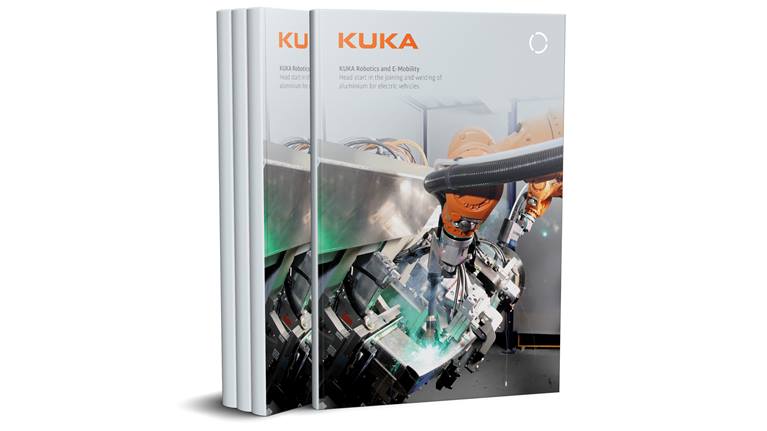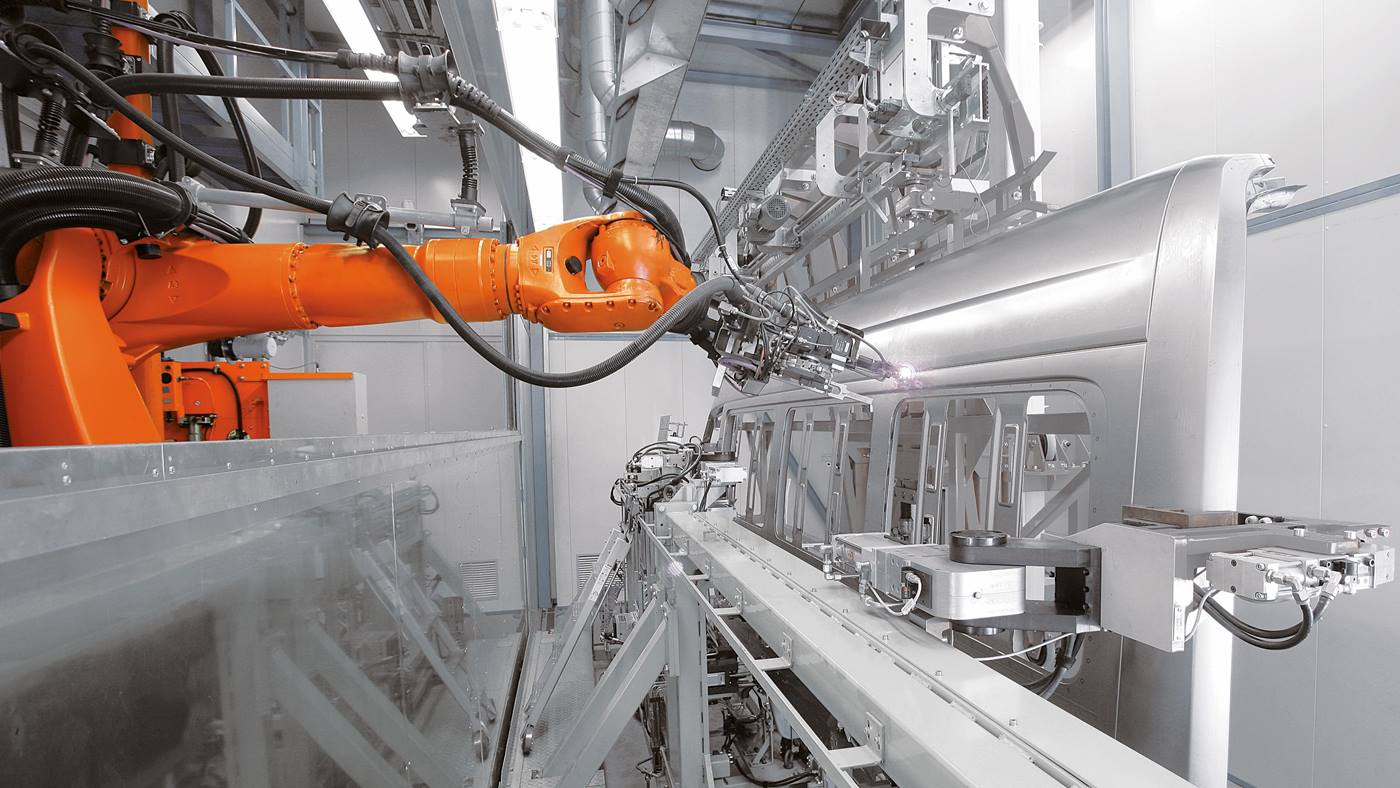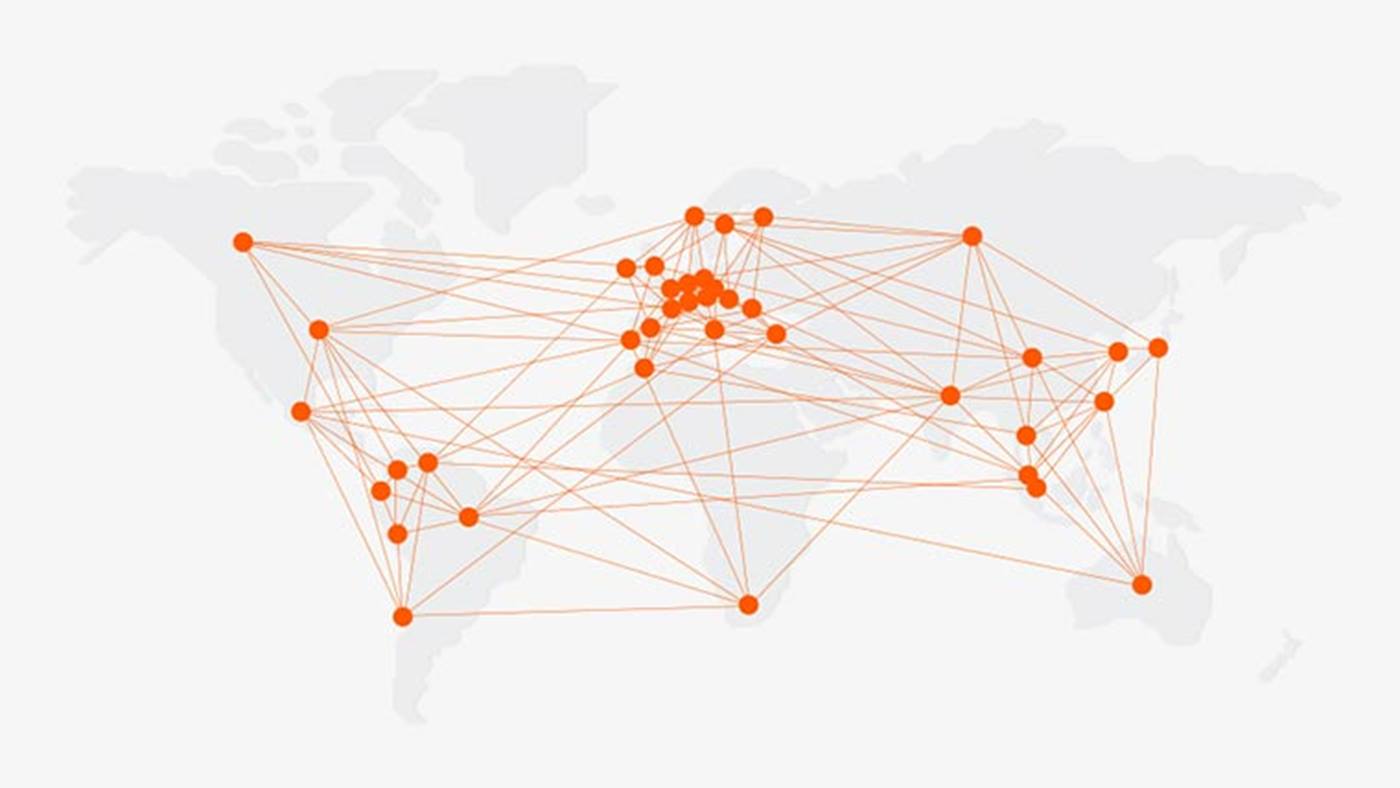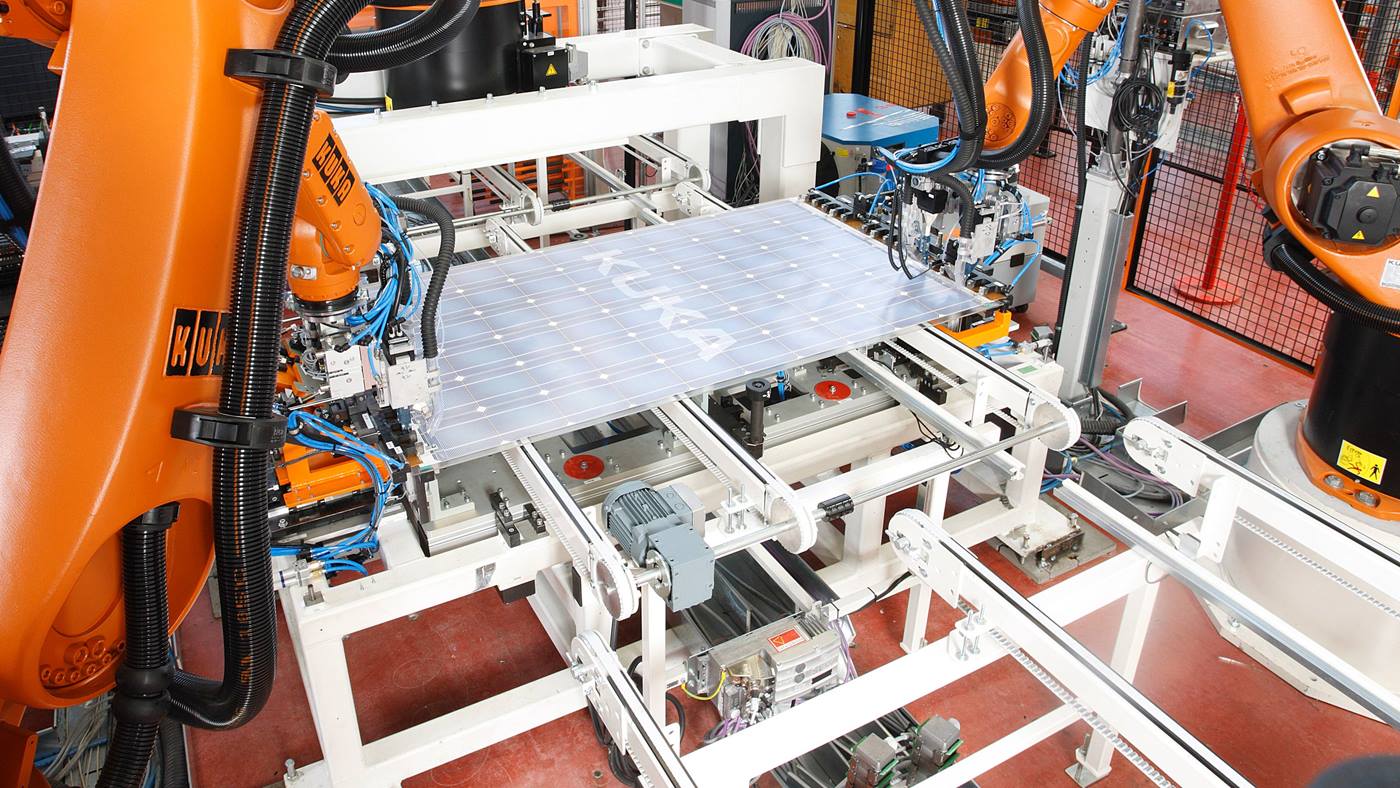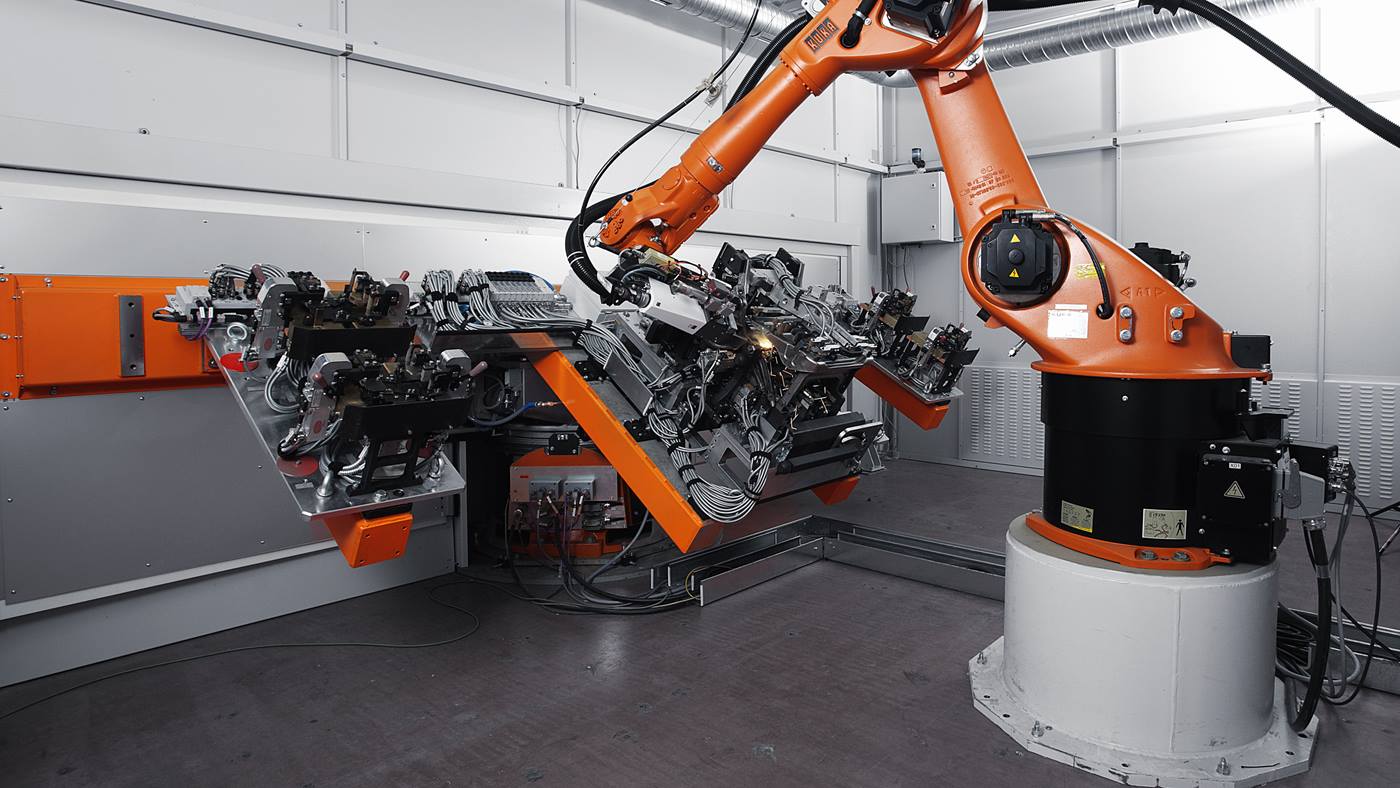What is the technology behind the laser soldering?
Laser soldering is a non-contact process: the laser beam heats up the solder. This is then introduced to the process as a filler wire, which usually consists of copper or zinc alloys. The solder then melts and fills the joint gap. The melt fuses the two components.
The two processes of laser soldering technology:
- Hard soldering using a laser at melting temperatures above 450 °C:
This joining technique uses diode lasers with higher power and is used primarily in the automotive industry. - Soft-soldering using a laser at melting temperatures below 450 °C:
This technique is commonly used in the manufacture of electronic components.
Automated laser soldering
As a KUKA customer, you have two options:
- Automated and scalable production systems
- Individually configured manufacturing cells
Parameters such as path velocity, laser power or optimum wire feed are second nature to us, and we offer various technology packages for different production scenarios.
Due to its ideal combination of strength and light weight, aluminum plays an important role in electromobility. In welding and joining processes, aluminum places high demands on the technologies used. With comprehensive process know-how and the right products, KUKA prepares you for the technological transformation towards electromobility. The battery box example shows how robots enable the production of aluminum components to the highest quality standards.
Read about what is important for aluminum welding in the electromobility sector
Download e-book
Software to automate your soldering tasks
With our modular software solutions, you can carry out intelligent robot-based soldering processes using lasers and thus increase your production. The aim is to reliably monitor all parameters through ideal communication between the soldering equipment and the robot controller.
With KUKA, laser applications mean automation, accuracy and significant process improvement.
Find more details about our laser technologies in the brochure.
Download here







